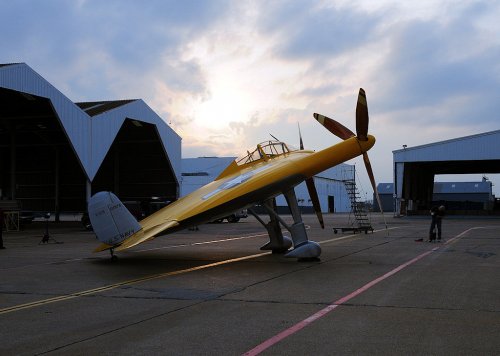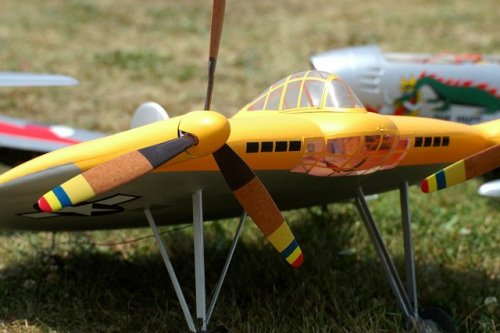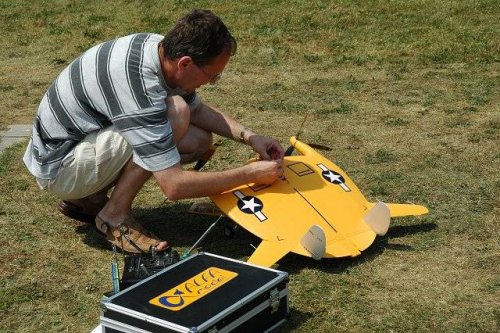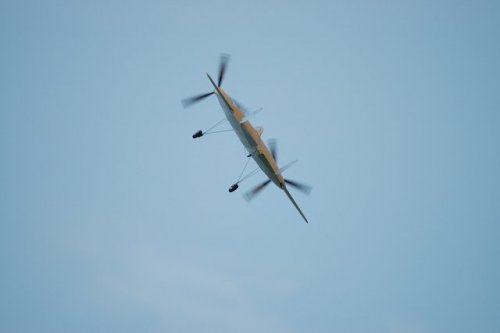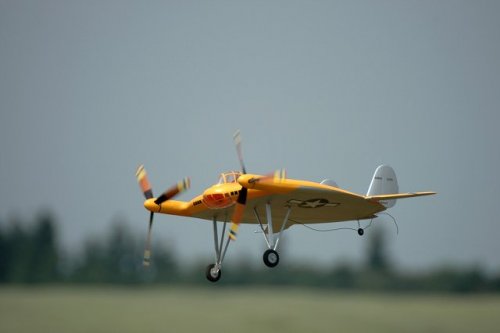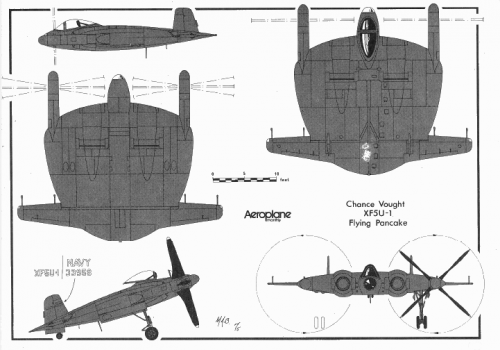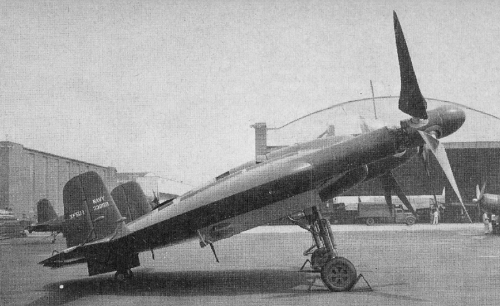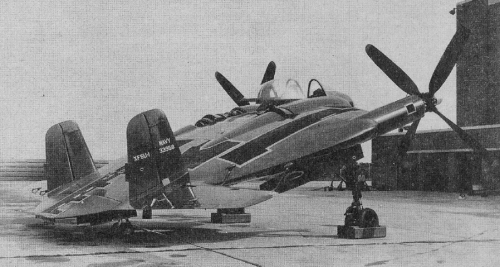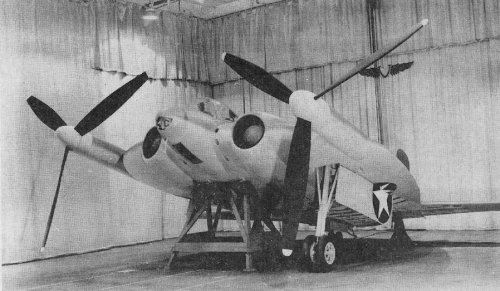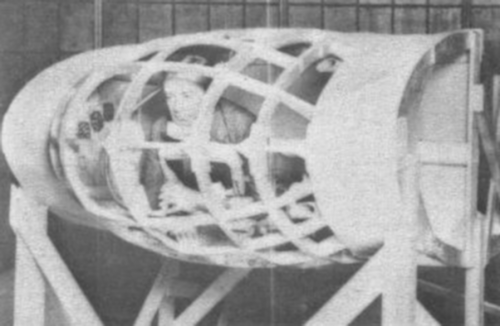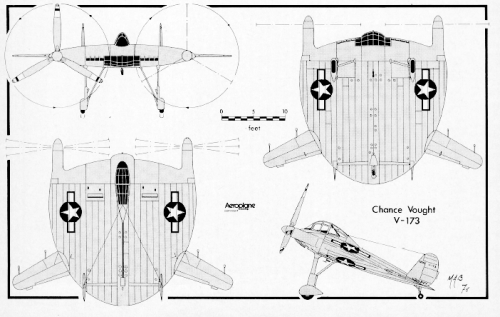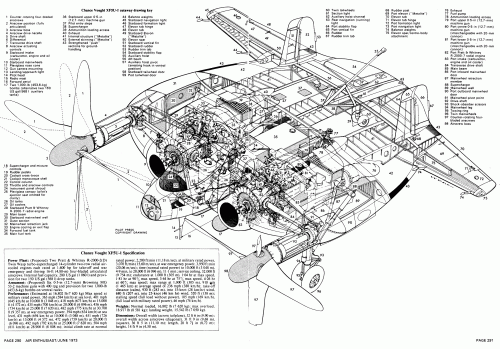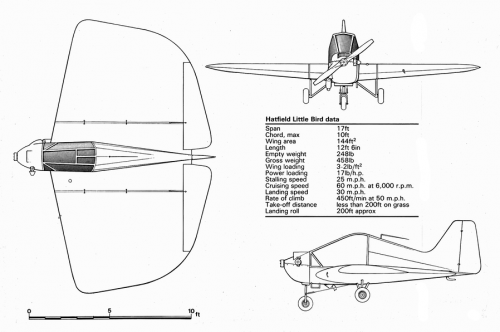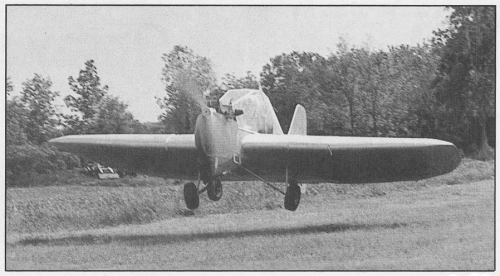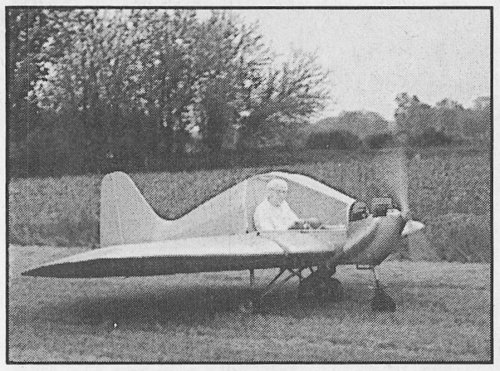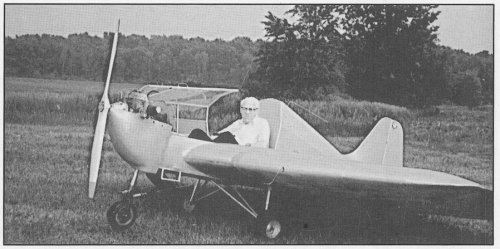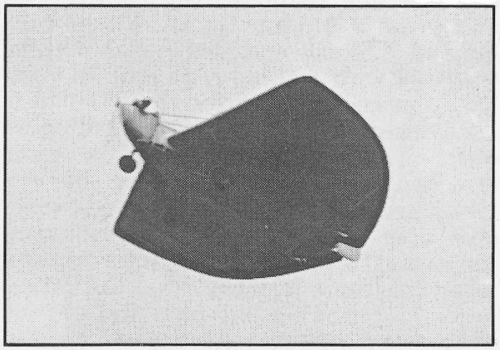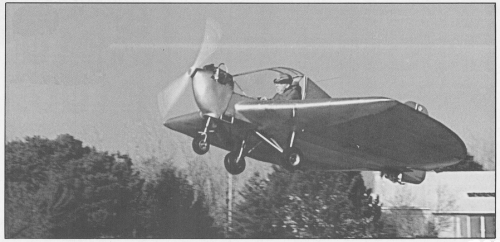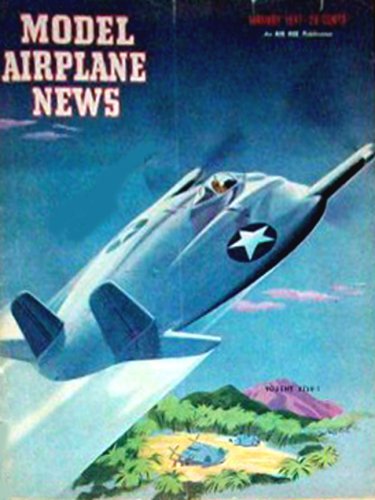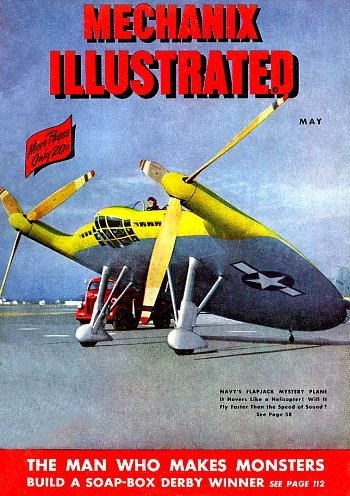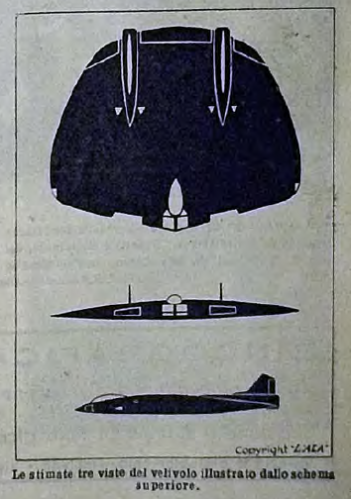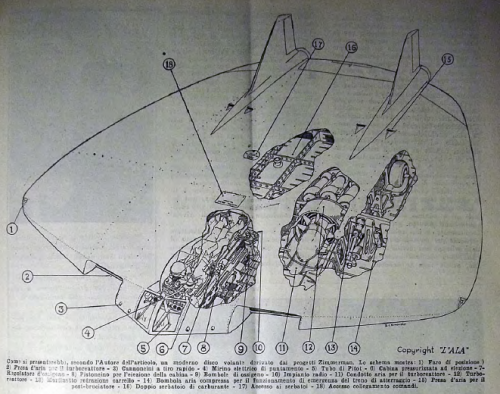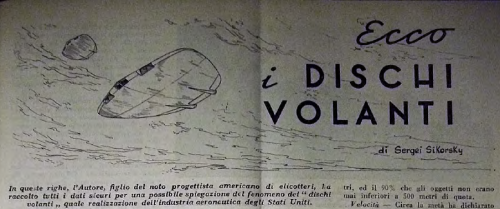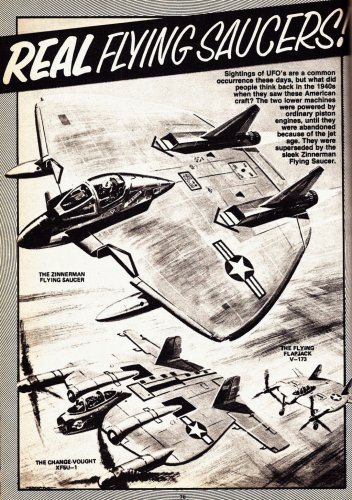There's a rather good article about the V-173 and XF5U-1, in the November and December 1975 issues of 'Aeroplane Monthly', written by Art Schoeni.
I wont post the whole article, obviously, but here are some pertinent quotes and images :-
"In a design competition at NACA in 1933
he [Zimmerman] designed a circular-wing aeroplane
that was to fly at high speed and yet
hover like a helicopter.
His design won the competition with its
aerodynamic excellence and sound engineering.
However, NACA rejected the idea for further
development because it was "too advanced".
As originally planned, the little aircraft was to
carry three passengers lying prone to promote
streamlining, changing to upright position in flight.
The idea was incorporated in a US patent
procured by Zimmerman in 1938,
but he had abandoned it before
then as being marginal in comfort.
The design called for the ultimate
lighter to have large props with
helicopter-like flapping blades that
would support it in hovering flight.
Thus there was talk of an
aeroplane that could take off vertically
and fly forward at 500 m.p.h.
Before Guyton made the V-l75’s
first flight, full-scale wind tunnel tests
at Langley Field indicated that the
high induced drag of the low aspect
ratio wing would be partially com-
pensated for by the interaction of the
large props rotating in opposite direc-
tions ahead of the wing. Wing tip
vortices which cause loss of lift on
conventional wings were nullified by
having each propeller rotating counter
to the vortices.
vibration in the cockpit was a per-
sistent problem. This was caused by
resonant frequency between the pro·
pellers and the nacelle structure,
which Zimmerman greatly alleviated
by installing vibration dampers on
the propellers. The problem was not
met in the heavily constructed XF5U-1,
but it led to development of articu-
lated propeller blades in the fighter
to avoid the non-symmetrical airflow
at high angles of attack.
"Being a former naval carrier pilot,
I was keen for the idea of vertically
landing a 500 m.p.h. fighter to a hook
installation on a cruiser or battleship."
[Boone T. Guyton, V-173 test pilot.]
Full-scale wind tunnel tests of the
Pancake were run in September 1941,
at NACA’s Langley Field, Virginia.
Following successful completion of
these, the Navy asked Vought to
design and build two military versions
of the VS-515, which were designated
the XF5U-1. One would be a flight test
aircraft and the other for static testing
in the laboratories.
completed June 7. 1943. By November
it was decided that the interim propellers
on the XFSU-1 would not do,
and that propellers with articulated
or "flapping" blades would be
required.
Gear box problems in the big right-
angle. drive shafts to each propeller
had negated the chance to fly the
XF5U-1 safely from any airfield other
than Muroc. The quarter-million dollar
price tag on a test programme also
was a factor—the Navy preferred to
spend the money on jet aircraft. The
complicated shafting and gear boxes
developed by Vought engineers
presented problems that might. have
hampered the project anyway. Other
turboprop projects of that era also
were having gearbox trouble.
The original propellers installed on
the XF5U-1 lighter were conventional
Hamilton Standard Hydromatics,
similar to those on the F4U-4 Corsair.
When it was discovered that flapping
blades would be required to avoid
vibrration by unsymrnetrical airflow
and to resist heavy loads when flying
at high angles of attack, Zimmerman
had a problem.
The new props were de-signed by
Zimmerman with Vought engineers’
help and built by Vought. "For a time
it appeared the project would have
to be abandoned," Zimmerman said,
"but after a desperate weekend of
work I came up with a design using
two pairs of teetering blades, similar
to the Bell helicopter rotor, one pair
mounted ahead of the other to form
a four-bladed propeller"
Vought's machine was expected to
achieve a speed range from 40 to 425 m.p.h
with the original engines, 20 to 460
m.p.h. with water injection engines,
and 0-550 m.p.h. with gas turbine
powerplants.
Guyton and William Millar, another
company test pilot later killed in an
F7U-1 Cutlass crash, made numerous
taxi tests in the XF5U-1. On one
occasion it lifted briefly off the runway,
a common occurrence on early
test runs."
In the PDF posted by mboeller, above, it's stated that the XF5U-1 was scrapped at Edwards, whereas Schoeni says that the XF5U-1 never went to Muroc, as it then was, instead being scrapped at the Vought plant.
Likewise the PDF says that the V-173 originally flew with a prone pilot arrangement, however Schoeni makes no mention of this, and I've not seen any images of the V-173 with a prone cockpit, other than the one from the 'Aeroplanes Vought' book, (available online at
http://celticowboy.com/AV2/index.htm) posted below.
cheers,
Robin.

